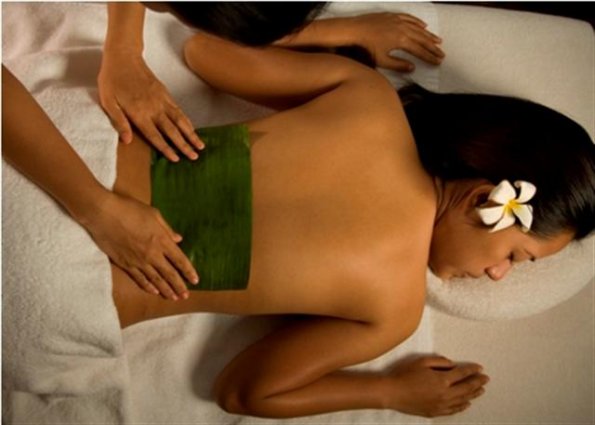Embracing Ancient Wisdom: Traditional Healing Practices in Coron and El Nido
The Philippines, renowned for its rich cultural heritage, offers a wealth of traditional healing practices that have been passed down through generations. In the idyllic destinations of Coron and El Nido, visitors can experience the transformative power of these ancient healing modalities.
One of the most popular traditional healing practices in the Philippines is hilot, a form of bodywork that involves massage, manipulation, and herbal remedies. Hilot practitioners believe that the body’s energy flow can become blocked, leading to illness and discomfort. Through skillful techniques, hilot can help restore balance and promote healing.

Traditional Healing Practices
- Hilot Massage: Hilot is a traditional Filipino healing art that involves the use of massage and herbal remedies. In Coron and El Nido, skilled practitioners, known as manghihilot, employ a combination of massage techniques to balance the body’s energy and address various ailments. The treatment often involves the use of warmed banana leaves and natural oils, creating a holistic experience that promotes physical and spiritual well-being.

- Herbal Medicine:The lush landscapes of Coron and El Nido are a treasure trove of medicinal plants and herbs. Traditional healers, known as albularyo or herbalists, utilize the healing properties of indigenous plants to create herbal concoctions for various ailments. From digestive issues to respiratory problems, these herbal medicines are often passed down through generations, embodying the deep connection between nature and health.
- Tribal Healing Rituals: Coron and El Nido are home to indigenous communities, such as the Tagbanua people. These communities often practice unique healing rituals that involve the chanting of prayers, the use of traditional instruments, and the performance of sacred dances. These rituals are believed to invoke ancestral spirits and natural energies to bring about healing and balance.
- Banawe: Traditional Bone Setting: Banawe, or traditional bone setting, is a practice that involves realigning dislocated bones and joints. Practitioners, often referred to as manghihilot or mananambal, use manual manipulation and massage to address musculoskeletal issues. This traditional healing method is deeply ingrained in the culture of Coron and El Nido, with skilled practitioners passing their knowledge down through apprenticeships.
- Dagmay Weaving for Healing: Among the Tagbanua and other indigenous groups in Coron and El Nido, dagmay weaving holds cultural and healing significance. Women engage in the intricate art of dagmay weaving, creating traditional garments with intricate patterns. The process is seen not only as a cultural expression but also as a form of meditation and healing. The rhythmic nature of weaving is believed to restore balance and harmony to the weaver’s spirit.

Another traditional healing practice found in Coron and El Nido is the use of herbal remedies. The Philippines is home to a diverse array of medicinal plants, each with its unique properties and benefits. Local healers often use these plants to create natural remedies for various ailments.
In addition to hilot and herbal remedies, visitors to Coron and El Nido can also experience other traditional healing practices, such as acupuncture, reflexology, and energy healing. These modalities can help promote relaxation, reduce stress, and improve overall well-being.

- Tubig-Tubig Rituals: Tubig-tubig, or water rituals, are traditional practices that involve the use of consecrated water for healing purposes. This may include rituals for cleansing, blessing, or providing spiritual protection. Water is considered a purifying element, and these rituals are often performed by community healers to address both physical and spiritual ailments.
- Tawas: Spiritual Cleansing with Salt: Tawas is a traditional method of spiritual cleansing that involves the use of salt. Healers use salt crystals, water, and prayers to perform cleansing rituals, believed to remove negative energy and promote spiritual well-being. This practice is deeply rooted in the cultural and spiritual traditions of the communities in Coron and El Nido.
- Connecting with Traditional Healers: To experience traditional healing practices firsthand, visitors can seek out local healers and practitioners in Coron and El Nido. Establishments, community centers, and local guides may provide insights into connecting with traditional healers who are open to sharing their knowledge and performing healing rituals.
- Respecting Local Customs: It’s essential for visitors to approach traditional healing practices with respect and cultural sensitivity. Seek permission before participating in rituals, be mindful of local customs, and follow any guidelines provided by traditional healers. Understanding the cultural context enhances the authenticity of the experience and fosters a meaningful exchange.

Traditional healing practices in Coron and El Nido offer a profound journey into the interconnectedness of nature, culture, and well-being. From the soothing touch of Hilot massages to the spiritual depth of tribal healing rituals, these practices reflect the wisdom passed down through generations. Embracing these traditions not only promotes personal health but also contributes to the preservation of cultural heritage in these captivating corners of Palawan. Visitors can explore the healing arts of Coron and El Nido, discovering a holistic approach that harmonizes the body, mind, and spirit with the natural wonders that define this tropical paradise.
Tiki Tours, a leading tour operator in the region, offers a 3-day expedition to El Nido that includes opportunities to experience traditional healing practices. As you explore the stunning landscapes of Coron and El Nido, take the time to immerse yourself in the rich cultural heritage of the Philippines and discover the benefits of traditional healing.

